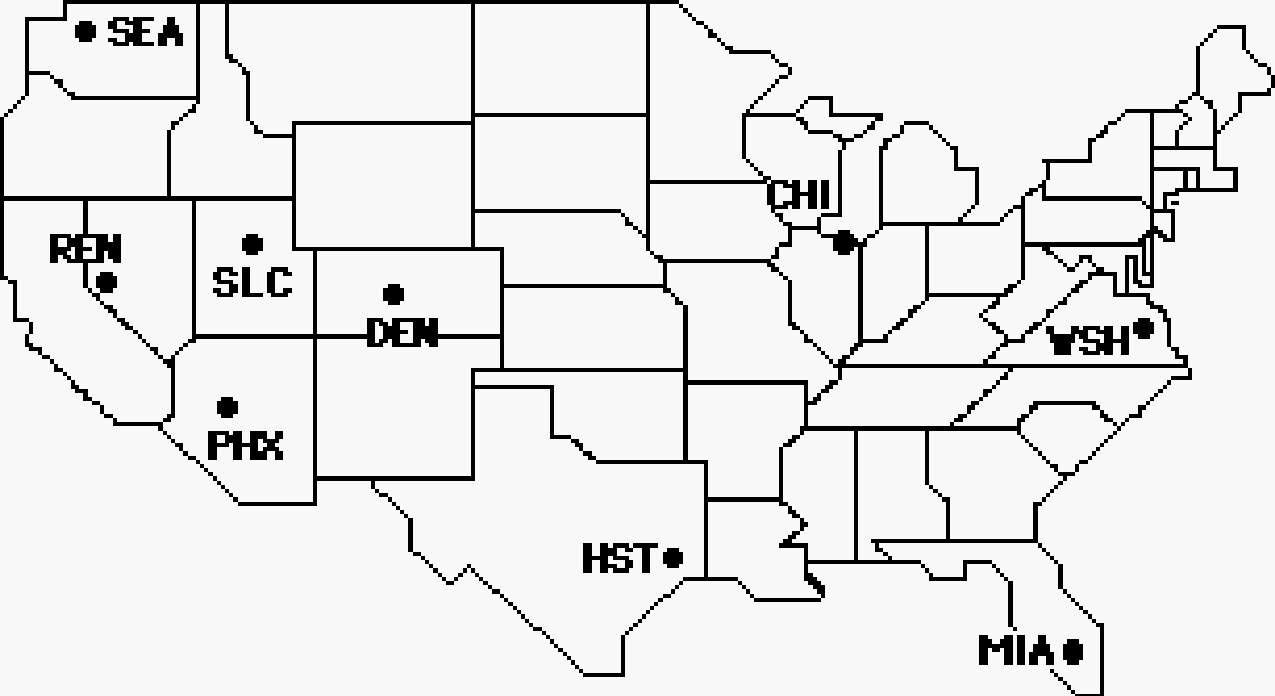Mechanics: Vectors and Projectiles
Vectors and Projectiles: Audio Guided Solution
Problem 10:
Consider the map of the United States below. Given the scale that 1 cm = 340 km, a protractor and a ruler can be used to determine the magnitude and direction for the following trips. All directions are expressed using the counter-clockwise from east convention. For each trip, use the sine, cosine and tangent functions to determine the horizontal and vertical components of the displacement. Be sure to indicate E, W, N, or S as the direction for each component.

|
Trip |
Displacement |
Horiz. Component |
Vert. Component |
|
Chicago to Denver |
1430 km, 187° |
|
|
|
Reno to Miami |
4030 km, 341° |
|
|
|
Seattle to Washington |
3480 km, 344° |
|
|
|
Houston to Salt Lake City |
2040 km, 143° |
|
|
Audio Guided Solution
Habits of an Effective Problem Solver
-
Read the problem carefully and develop a mental picture of the physical situation. If necessary, sketch a simple diagram of the physical situation to help you visualize it.
-
Identify the known and unknown quantities in an organized manner. Equate given values to the symbols used to represent the corresponding quantity - e.g., vox = 12.4 m/s, voy = 0.0 m/s, dx = 32.7 m, dy = ???.
-
Use physics formulas and conceptual reasoning to plot a strategy for solving for the unknown quantity.
-
Identify the appropriate formula(s) to use.
-
Perform substitutions and algebraic manipulations in order to solve for the unknown quantity.
Read About It!
Get more information on the topic of Vectors and Projectiles at The Physics Classroom Tutorial.
Return to Problem Set
Return to Overview
View Audio Guided Solution for Problem:
1 | 2 | 3 | 4 | 5 | 6 | 7 | 8 | 9 | 10 | 11 | 12 | 13 | 14 | 15 | 16 | 17 | 18 | 19 | 20 | 21 | 22 | 23 | 24 | 25 | 26 | 27 | 28 | 29 | 30 | 31 | 32 | 33 | 34